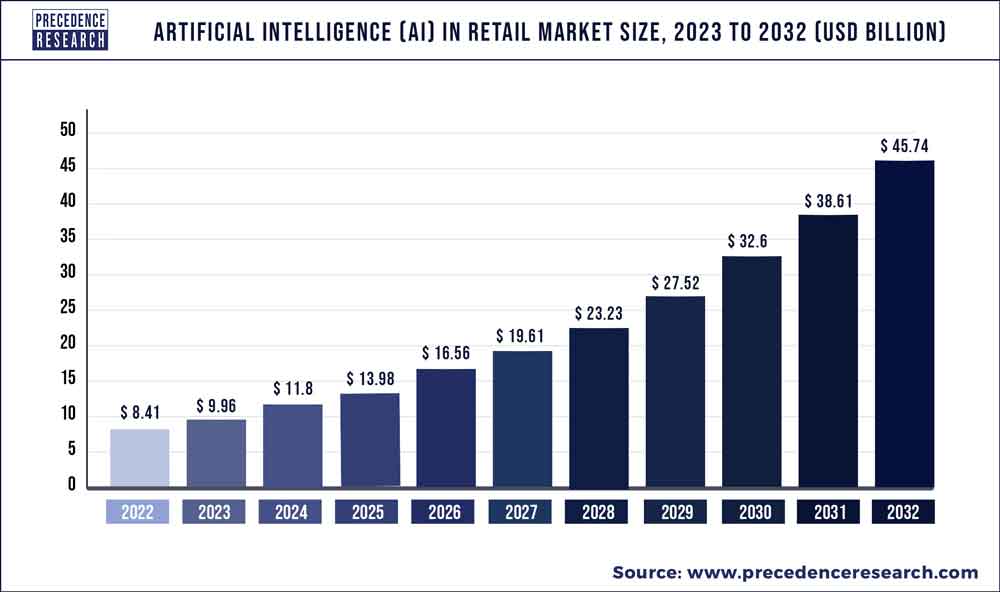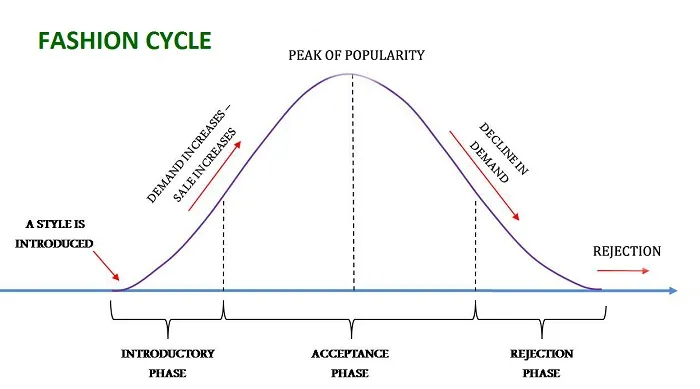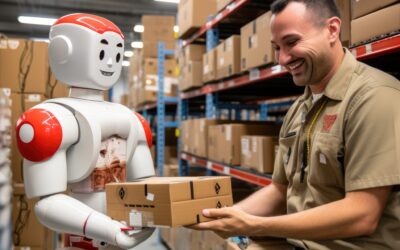.We’re headed towards the new year i.e., 2025. And, without planning and prediction, businesses can lead to failure. So, AI in fashion is emerging very quickly & bringing shocking experiences for humankind. Meanwhile, many retail brands often try to bring innovations to the table.
However, to analyze what’s happening currently and what’s going to happen in the future, it’s crucial to stay up-to-date about the industry and avoid any downfall.
Also, it’s a generation of artificial intelligence, and we already know how AI is making human life easier and more productive. Right? So, we thought this time to have an insight into upcoming fashion trends with AI. Let’s have an overview.
AI in Fashion- What Artificial Intelligence Has Predicted?
Looking forward to the advantages and disadvantages of AI in fashion in 2025, we’ve evolved a lot to experience the personalized benefits. Here are a few most wonderful details about how fashion is evolving…
1. Sustainable and Eco-Friendly Fashion
As per the prediction of Artificial Intelligence in fashion, we found that people are moving towards sustainable fashion products that don’t disturb the ecosystem. This means people will start choosing environmentally friendly clothing brands.
Expect vintage and worn clothing to gain popularity, as well as more imaginative fabrics made from recycled materials such as plastic bottles and ocean garbage.

Companies will emphasize up-cycling, recycling, and extending the life of garments as the industry grows to properly comprehend the concept of circularity.
Moreover, minimalist aesthetics will experience a strong revival. Classic shapes, subtle colors, and clean lines will rule the runways.
But don’t let that fool you into thinking that bravery will be absent. Maximalism, in contrast to this ability for simplicity, will make a reappearance with bright designs.
2. Data-Driven Fashion Forecasting
The second jaw-dropping trend will be based on data-driven approaches. With the help of advanced analysis and machine learning, fashion companies can easily extract an unlimited amount of old and real-time data to predict upcoming fashion innovations with complete accuracy.
It’s a good news that you don’t have to rely on your second thoughts, third thoughts, doubts, and confusion about what can go wrong. AI in the fashion industry with machine learning algorithms will do the work for you.
It will work by delving deep into historical data and present data on fashion change, and then provide you with future predictions with accurate results.
You can easily identify secret patterns, emerging styles, consumer behavior, and preferences. It’s like having a crystal ball that reveals the hottest trends before they even hit the runways!
3. Personalized Fashion Recommendations
Next, the magic truly happens. Imagine you’ve got a fashion recommender who can help you personalize your wardrobe with trending clothes, accessories, footwear, etc.
Not only this, brands with artificial intelligence in the fashion industry will craft your unique style, personal preferences, and body type with the powerful impact of machine learning.
Welcome to AI advancements and deep learning; it’s all possible. It will be so easy and accurate to analyze outfit choices, your favorite brands, and social media posts to predict your own taste in fashion.
Hence, you’ll be able to enjoy the personal recommendations that are going to turn heads and all jaws drop. In simple terms, having a personal stylist style your daily outgoing outfits that match the latest trends
4. Virtual Try-On Experiences
Okay! AI in fashion like advanced algorithms has turned this trend into a reality. So, exactly what do we face when buying something online? size issue, or whether the dress or jacket will look good on me or not? Right.
Here comes the solution: virtual try-on experiences. An individual can easily select their chosen outfit and upload the photo in the comfort of their home! AI does its work. You will be able to see yourself in your selected outfit.
Also, Google has introduced virtual try-ons with the help of Gen AI.
Thus, it reduces the risk of dissatisfaction with online purchases and opens the road to fully experiencing outstanding and seamless fashion trends.
5. Predictive Inventory Management
Last but not least, for inventory management, it will be easier for fashion brands to list their collection of products. With the help of AI algorithms, fashion companies can analyze past data, current trends, and external stuff like weather trends to check demand accuracy.
This trend not only prevents overstocking of the products but also ensures that popular items are readily available, keeping both retailers and customers satisfied.

Technologies Used in the Fashion Industry?
Fashion in an art form readily embraces new technologies to not only elevate aesthetics but also streamline processes and cater to the dynamic demands of the industry. Here’s a peek into some of the fascinating technologies transforming the fashion scene:
1. Artificial Intelligence (AI)
- AI-powered Design: AI algorithms analyze vast data sets of fashion trends, customer preferences, and market demands to generate design concepts and even complete sketches, aiding designers in brainstorming and refining their ideas.
- Virtual Try-on Technology: AI-powered virtual try-on platforms allow customers to virtually “wear” clothes, using their body scans or uploaded selfies, before making purchase decisions. This not only enhances the online shopping experience but also reduces returns and unsold inventory.
- Personalized Recommendations: AI analyzes customer data and browsing behavior to recommend products and styles that are likely to appeal to them, leading to a more satisfying and efficient shopping experience.
2. 3D Printing and Digital Fabrication
- Rapid Prototyping: 3D printing enables the creation of physical prototypes of garment designs quickly and accurately, accelerating the design and development process. This allows for faster iteration and refinement of designs before mass production.
- Mass Customization: 3D printing and digital fabrication technologies allow for the creation of customized garments, catering to individual preferences and body shapes. This opens up exciting possibilities for made-to-order fashion and empowers customers to be active participants in the design process.
3. Robotics
- Automated Sewing and Manufacturing: Robotic arms are increasingly being used in garment manufacturing to automate tasks such as cutting, sewing, and finishing, leading to increased efficiency and precision. This can potentially reduce labor costs and improve product quality.
- Warehousing and Logistics: Robots are being deployed in warehouses to automate tasks such as sorting, packing, and shipping garments, streamlining the logistics process and improving order fulfillment speed.
4. Virtual Reality (VR) and Augmented Reality (AR)
- VR Fashion Shows and Showrooms: VR provides immersive experiences for showcasing fashion collections, allowing brands to host virtual fashion shows and create interactive showrooms where customers can explore garments in a 3D environment.
- AR-powered Styling and Shopping: AR apps allow customers to virtually try on clothes and accessories using their smartphones or tablets, overlaying digital garments onto their live images. This provides a fun and convenient way to experiment with different styles and make informed purchase decisions.
5. Innovative New Materials and Processes
- Biofabrication: Develop sustainable and environmentally friendly fabrics using microorganisms or plant-based materials. AI can be used to optimize the biofabrication process, create new material properties, and scale up production for commercial viability.
- Circular fashion: Design and develop garments that are easily disassembled, recycled, or upcycled. AI can help identify suitable materials, optimize recycling processes, and create closed-loop production systems that minimize waste.
Aside from the topic, here’s a forecast of a fashion cycle: how do fashion retailers see highs and lows in their sales? When the demand for a product increases, sales also increase, and at that moment, the brand is touching the sky.
When the product gets rejected due to its low quality, high price, or style, it goes straight down.

Examples of Fashion Brands using Artificial Intelligence
Let’s dive into some real-world examples of how AI is revolutionizing the fashion industry across different stages:
Design and Development
- Tommy Hilfiger: Leverages AI for design inspiration, analyzing social media trends and customer preferences to generate mood boards and suggest styles.
- Nike: Employs AI to optimize shoe design for performance and comfort, using simulations to test different materials and geometries before production.
- Material Ink: Develops custom, AI-designed textiles with unique functional properties like temperature regulation or self-cleaning capabilities.
Production and Manufacturing
- Adidas: Uses AI to automate shoe customization, allowing customers to design their own sneakers and receive them within 24 hours.
- Levi’s: Implements AI-powered robots for denim finishing, achieving greater consistency and efficiency than traditional hand-finishing methods.
- Fashion for Good: Partners with startups like Unspun to utilize AI in fabric recycling, transforming textile waste into new, high-quality yarns for garment production.
Retail and Customer Experience
- H&M: Offers a virtual try-on app powered by AI, allowing customers to see how clothes look on them before visiting a store.
- Net-a-Porter: Employs AI-powered personal shopping bots that learn customer preferences and recommend clothing, accessories, and even entire outfits based on their taste.
- Stitch Fix: Uses AI to personalize online clothing subscription boxes, sending curated selections based on each customer’s style and fit preferences.
Sustainability and Transparency
- BoF Sustainability Index: Utilizes AI to track and rank the sustainability performance of fashion brands, providing transparency for consumers and promoting ethical practices.
- Madewell: Implements AI to monitor its supply chain and identify potential environmental and social risks, ensuring responsible sourcing and production.
- Re:Source: Develops an AI-driven platform that connects brands with excess materials and waste, facilitating reuse and reducing textile landfills.
Also Read: AI in Retail- How Artificial Intelligence is Reshaping the Industry?
Limitations and Disadvantages of AI in Fashion Evolution
Although AI is a potential new tool for anticipating fashion trends, there may be downsides and disadvantages of AI in fashion.
One issue is data bias, which occurs when the data used to train AI systems is not diverse enough and represents preexisting preconceptions in the fashion industry.
To solve this issue, AI in the fashion industry should be trained on a range of inclusive data sets & keep up-to-date algorithms as well.
Furthermore, because AI can only discern existing patterns and trends and cannot create entirely new ones, human creativity and intuition are still essential in the design process.
What is the Future of AI in Fashion Industry?
AI Predicted the amazing fashion trends of 2024–2030 Many cultures and ages will be blended with maximalist and minimalist designs, resulting in a magnificent fusion of traditional and modern elements.
Expect to see startling fusions of Western and Eastern ideas, as well as a comeback of 1960s, 1970s, and 1980s vintage trends. The runway will be transformed into a vibrant fabric that honors ethnic history and encourages individuality.
However, it has already started, and it is to be said that we have also seen fashion repeat.
Also, where boundaries and rules do not affect fashion, It’s a universe where self-expression is unrestricted and creativity rules king. Fashion becomes a storytelling medium through which people may express their own identities and points of view.
Clothing with seamless technology integration may evolve in response to our ever-changing expectations and opinions. As fabrics come to life with vibrant colors, patterns, and textures, our garments become living masterpieces.
A Tractica analysis projects that the market for wearable AI apps will reach $10 billion by 2025.
Related: AI Trends to Watch Out in 2024!
Closing Thoughts!
AI is the secret weapon that not only helps predict trends but also ensures that enthusiasts and businesses stay ahead of the curve. AI in fashion is transforming the industry in unexpected ways in 2025 and in coming years.
Embracing this technological revolution is not just a choice but a necessity for those who aim to lead artificial intelligence in fashion industry into a more stylish and sustainable future.
So, whether you’re a fashion business owner or a trend follower, let AI be your guide. Therefore, if you need an AI solution for your fashion brand, our expert team has your back.







